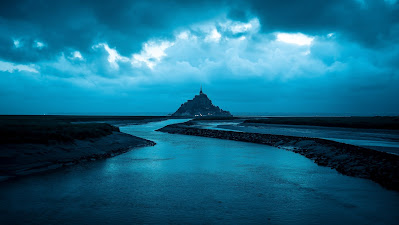The world in 2050 is hostile and less fertile,
more saturated and less diverse. Compared to 2021, there are more trees, but
fewer forests, more concrete, but less stability. The rich return to the holy places
with the fresh air behind the high walls regularly.
The World in 2050
Technology will be used to screen, diagnose and
cure diseases that reduce the population. Enormous and permanent slums will
proliferate in the hotter parts of the world. Credit: Abhijit Bhatlekar/Mint
The world in 2050 is more hostile and less fertile, more crowded and less
diverse. Compared with 2021, there are more trees, but fewer forests, more
concrete, but less stability. The rich have retreated into air-conditioned
sanctums behind ever higher walls. The World in 2050 Technology will be used to
screen, diagnose and cure diseases that reduce the population. Enormous and
permanent slums will proliferate in the hotter parts of the world. The global
power balance is poised to undergo a dramatic shift, as the rich lose their
economic and military supremacy.
The
World in 2021
In the course of a few decades the Earth has
already changed. In the mid-1980s, the Earth contained nearly six billion
people. In the mid-1990s, the population rose to over seven billion. In the
mid-2000s, it reached over eight billion. Then, in the 2010s, growth slowed. By
2050, the human population may have topped out at nine billion. The world in
2050 may look very different to the world in 2021. Many countries have already
become more concentrated, and nations are reaching a limit of how densely they
can place their population, especially in the tropics, where they are already
challenged by water shortages and growing desertification. There is no room for
a global population of over nine billion.
What
Changed?
We asked some experts how they predicted the
world might look to 2050, from prosperous countries like Sweden and Japan to
impoverished ones like India and Nigeria. The changes that made the most impact
on their predictions were economic — the introduction of technologies that were
cheaper and more productive. Africa: What It Will Look Like In 2050 In a close
race, Mali and Niger seem like the most likely candidates to join the club of
African countries that appear on the 2030 list. A few small African countries
appear on the 2050 list: Ethiopia, Eritrea, and Senegal. North America: What It
Will Look Like In 2050 Canada’s northern borders are expected to be open in
2050, with the Northwest Passage connecting Greenland and Canada.
What
Will We Do?
Well, the equivalent of looking out a window at
the future is to take another look at the history of the past few centuries.
What did we do in the 20th century? Looked backward. How has the century since
1900 changed the world? What might happen in the next century? This is the
“three-step” strategy. The New York Times blog New York Rewind has created a
series of timelines showing that our view of the past does little more than to
put events into context and describe what went on around them. The United
States joined the war against fascism and stood up to the Russians. We won the
Cold War. We fought a second one. And then we stood up to the Saudis. We didn’t
care much about climate change until it mattered. And we sent signals that we
didn’t care about global warming. What Did We Do?
Conclusion
I am not a global warming denialist. I do not
deny the fact of global warming, or the fact that humans contribute to it. I
think it is a reality that will affect the future of humanity, not just the
future of this planet. I do however, refuse to see a single global warming
trend that is meaningful in the long term. What the climatologists call the
“Pause” or “hiatus” of global warming does not disprove anthropogenic global warming,
since the planet was heating up in the 1970s and 1980s before it stopped. But
it is definitely an anomaly. What caused the “Pause”? Perhaps, the most
probable explanation is that the slowdown was due to some unknown external
cause. The cause can only be narrowed down if we know what our Sun is doing. We
do not, so it is all speculation at the moment.








0 Comments